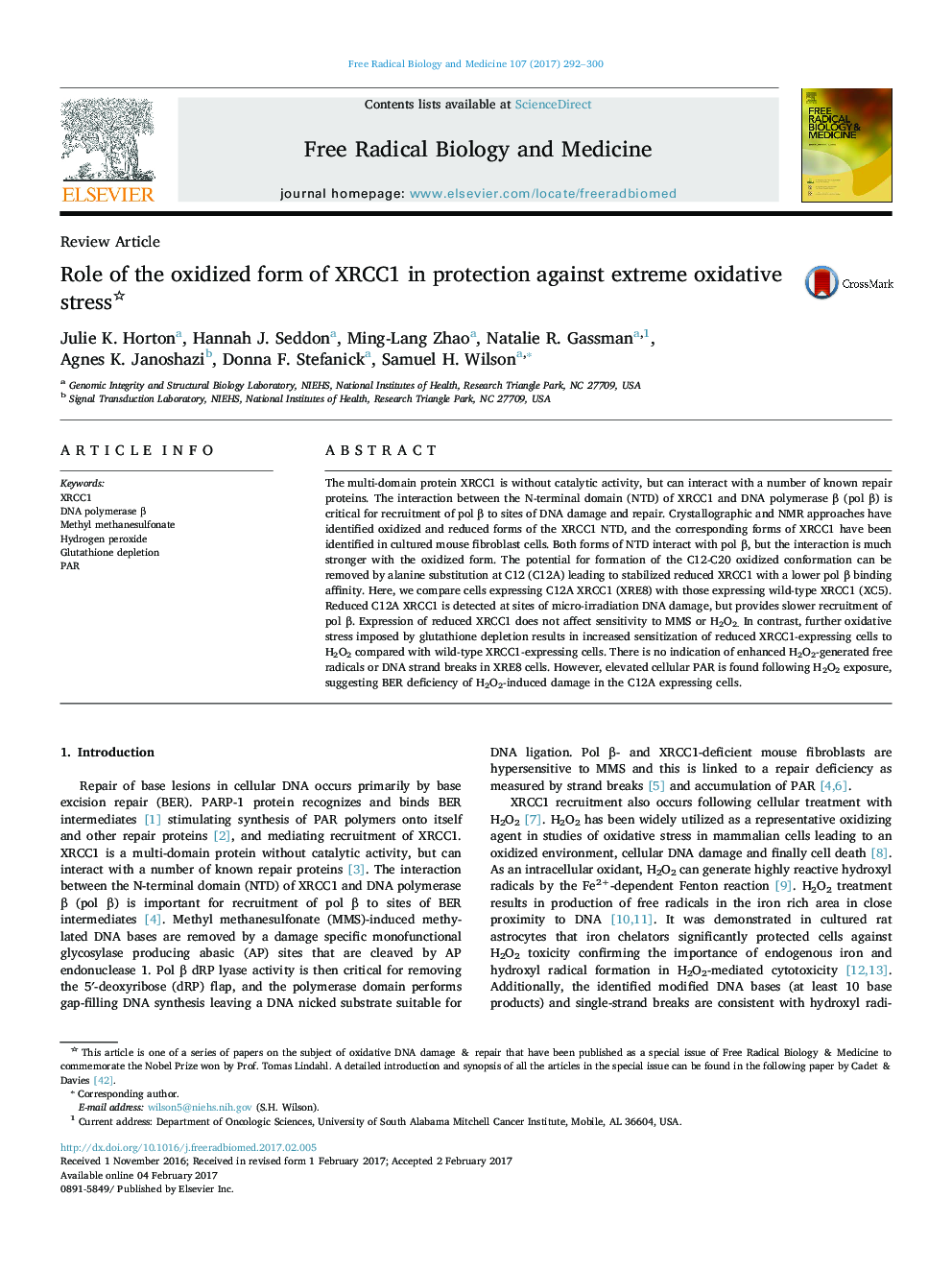| کد مقاله | کد نشریه | سال انتشار | مقاله انگلیسی | نسخه تمام متن |
|---|---|---|---|---|
| 5501826 | 1534936 | 2017 | 9 صفحه PDF | دانلود رایگان |

- Reduced XRCC1 is recruited to DNA damage, initial recruitment of pol β is slower.
- Enhanced H2O2 sensitivity of C12A-expressing XRE8 cells with glutathione depletion.
- No indication of enhanced H2O2-generated free radicals or DNA breaks in XRE8 cells.
- PAR elevated following H2O2 exposure, suggests BER deficiency in XRE8 cells.
The multi-domain protein XRCC1 is without catalytic activity, but can interact with a number of known repair proteins. The interaction between the N-terminal domain (NTD) of XRCC1 and DNA polymerase β (pol β) is critical for recruitment of pol β to sites of DNA damage and repair. Crystallographic and NMR approaches have identified oxidized and reduced forms of the XRCC1 NTD, and the corresponding forms of XRCC1 have been identified in cultured mouse fibroblast cells. Both forms of NTD interact with pol β, but the interaction is much stronger with the oxidized form. The potential for formation of the C12-C20 oxidized conformation can be removed by alanine substitution at C12 (C12A) leading to stabilized reduced XRCC1 with a lower pol β binding affinity. Here, we compare cells expressing C12A XRCC1 (XRE8) with those expressing wild-type XRCC1 (XC5). Reduced C12A XRCC1 is detected at sites of micro-irradiation DNA damage, but provides slower recruitment of pol β. Expression of reduced XRCC1 does not affect sensitivity to MMS or H2O2. In contrast, further oxidative stress imposed by glutathione depletion results in increased sensitization of reduced XRCC1-expressing cells to H2O2 compared with wild-type XRCC1-expressing cells. There is no indication of enhanced H2O2-generated free radicals or DNA strand breaks in XRE8 cells. However, elevated cellular PAR is found following H2O2 exposure, suggesting BER deficiency of H2O2-induced damage in the C12A expressing cells.
Journal: Free Radical Biology and Medicine - Volume 107, June 2017, Pages 292-300